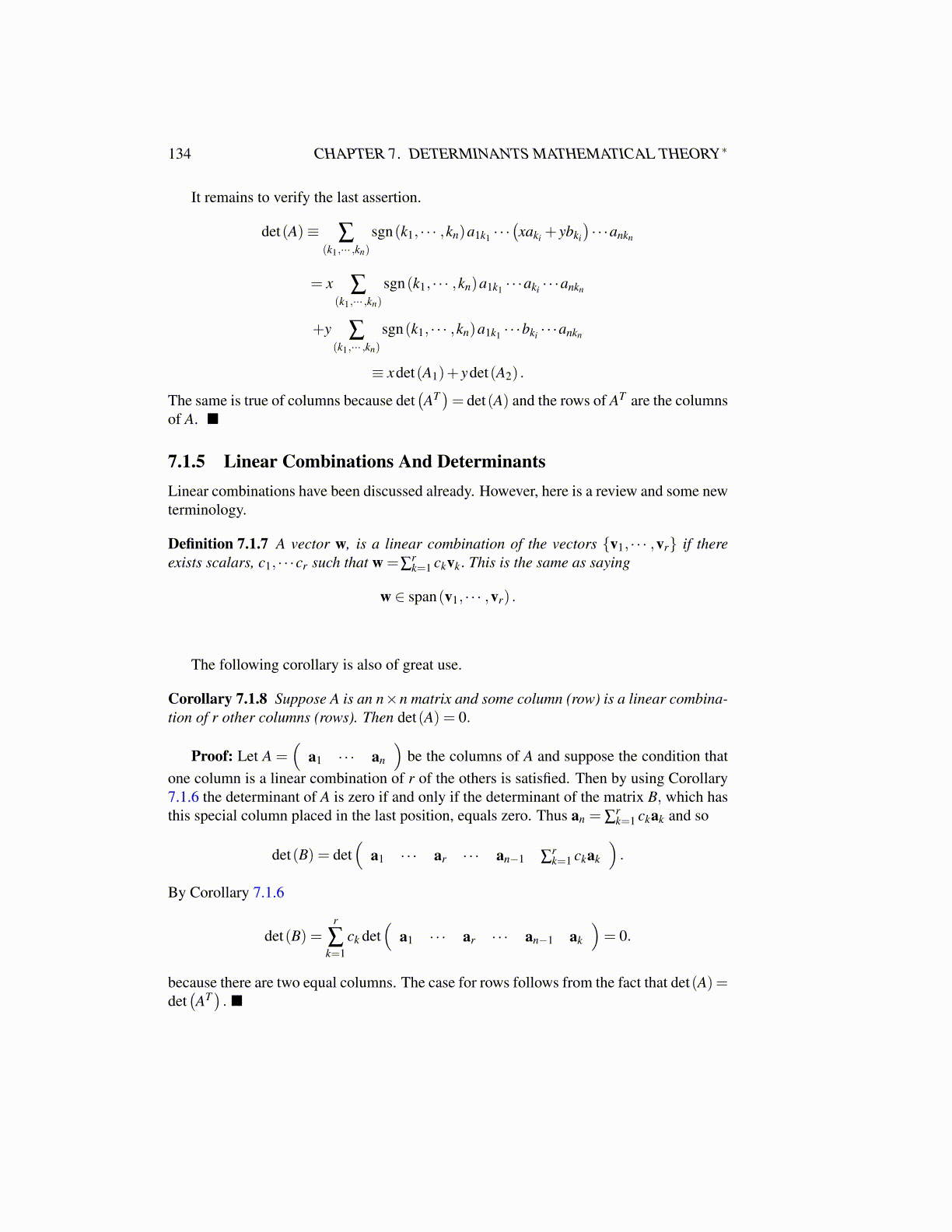
134 CHAPTER 7. DETERMINANTS MATHEMATICAL THEORY∗
It remains to verify the last assertion.
det(A)≡ ∑(k1,··· ,kn)
sgn(k1, · · · ,kn)a1k1 · · ·(xaki + ybki
)· · ·ankn
= x ∑(k1,··· ,kn)
sgn(k1, · · · ,kn)a1k1 · · ·aki · · ·ankn
+y ∑(k1,··· ,kn)
sgn(k1, · · · ,kn)a1k1 · · ·bki · · ·ankn
≡ xdet(A1)+ ydet(A2) .
The same is true of columns because det(AT)= det(A) and the rows of AT are the columns
of A. ■
7.1.5 Linear Combinations And DeterminantsLinear combinations have been discussed already. However, here is a review and some newterminology.
Definition 7.1.7 A vector w, is a linear combination of the vectors {v1, · · · ,vr} if thereexists scalars, c1, · · ·cr such that w =∑
rk=1 ckvk. This is the same as saying
w ∈ span(v1, · · · ,vr) .
The following corollary is also of great use.
Corollary 7.1.8 Suppose A is an n×n matrix and some column (row) is a linear combina-tion of r other columns (rows). Then det(A) = 0.
Proof: Let A =(
a1 · · · an
)be the columns of A and suppose the condition that
one column is a linear combination of r of the others is satisfied. Then by using Corollary7.1.6 the determinant of A is zero if and only if the determinant of the matrix B, which hasthis special column placed in the last position, equals zero. Thus an = ∑
rk=1 ckak and so
det(B) = det(
a1 · · · ar · · · an−1 ∑rk=1 ckak
).
By Corollary 7.1.6
det(B) =r
∑k=1
ck det(
a1 · · · ar · · · an−1 ak
)= 0.
because there are two equal columns. The case for rows follows from the fact that det(A) =det(AT). ■